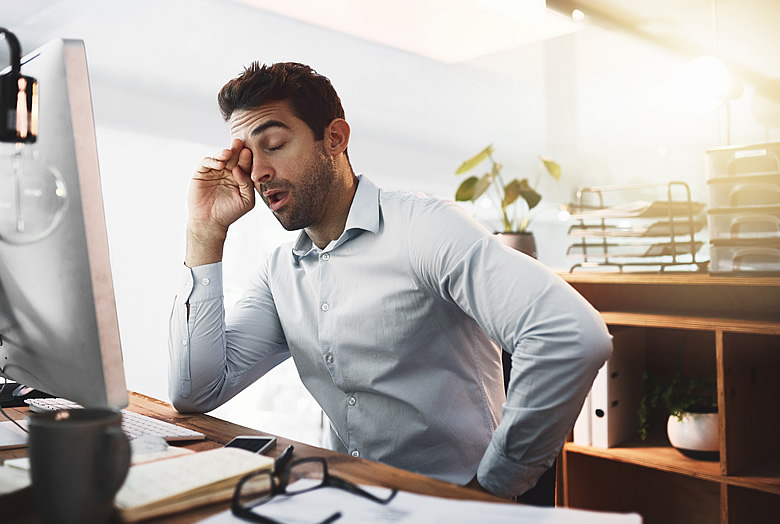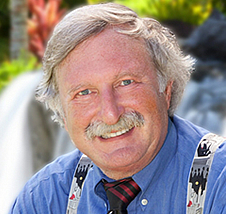Tired of Afternoon Slumps?

Drowsiness after lunch is a natural part of your body's "rest and digest" process, often referred to as a "circadian dip." However, with a few simple and healthy strategies, you can minimize these midday energy slumps and stay alert throughout the day.
What Are Circadian Dips?
Circadian dips are natural fluctuations in energy levels that regulate your body's internal clock, influencing your sleep-wake cycle throughout the day.
How Does the Circadian System function, and Where Do Circadian Dips Fit Into It?
The brain's biological clock is regulated by several key control centers, collectively known as the pineal-hypothalamic-pituitary axis. This system is designed to optimize energy levels during productive periods while allowing the body to rest, digest, and recover at other times.
A crucial component of this process is our stress-handling adrenal glands, which produce various hormones, including cortisol, the body's primary stress hormone. When cortisol levels are too high, you may feel restless or agitated. If they drop too low, especially when hungry, you might become irritable—often described as feeling "hangry." Elevated cortisol at night can also make it difficult to fall asleep, leaving your mind wide awake and racing.
When Do Circadian Dips Occur, and Why?
The most well-known circadian dip is the afternoon slump, which typically follows lunch. Later in the day, after an early evening energy peak, the body naturally begins to wind down in preparation for sleep.
Historically, people aligned with this rhythm by having their largest meal at midday, followed by a siesta to rest and digest. This practice was far healthier than immediately forcing the body into high-energy activities, which can trigger an adrenaline spike and contribute to indigestion.
However, the Industrial Revolution disrupted this natural cycle, prioritizing productivity over the body's inherent timing.
What Are Symptoms of a Circadian Dip?
During a circadian dip, you may feel drowsy, sluggish, and tempted to take a nap. Common signs include low energy, reduced motivation, and diminished mental focus. Essentially, your body is signaling that it’s time to rest and digest.
Why Do People Experience the Afternoon Slump, and How Do Circadian Dips Contribute?
The afternoon slump is a natural part of our circadian rhythm, causing a predictable dip in energy and focus. Several factors contribute to this midday slowdown:
-
Post-Meal Rest and Digest – Eating activates the parasympathetic nervous system, which prioritizes digestion and relaxation while reducing the adrenaline-driven (sympathetic) response that keeps us alert.
-
Mild Dehydration – Many people become slightly dehydrated by mid-afternoon, which can contribute to fatigue and reduced concentration.
-
Chronic Sleep Deprivation – Historically, before artificial lighting, the average person slept around nine hours per night. Today, that number has dropped to just six and three-quarters, leaving many in a perpetual state of sleep debt, which amplifies the effects of the afternoon slump.
What Can You Do to Minimize the Afternoon Slump—and Why Do These Tips Work?
Before trying to eliminate the afternoon slump, it’s important to recognize that it’s a natural and healthy part of your body’s rhythm. Instead of fighting it, the best approach may be to schedule lower-intensity tasks for the period after lunch. However, if you need to stay productive, there are several strategies to help sustain energy and focus.
1. Hydrate Strategically
Action: About 45 to 60 minutes after lunch, drink 12 ounces of cold water.
Why it works: This timing allows you to fully digest your lunch without disruption. Cold water helps rehydrate your body and can trigger a mild adrenaline release, which boosts alertness and counteracts sluggishness.
2. Support Energy with Key Nutrients
Action: Take a high-quality multivitamin and magnesium supplement each morning.
Why it works: Proper nutrition supports sustained energy levels throughout the day. Many multivitamins lack adequate potency, but well-formulated ones—such as the Fatigued to Fantastic™ Energy Revitalization Drink Mix—provide essential nutrients that enhance metabolic function and prevent energy crashes.
3. Use Targeted Herbal Support
Action: Try Red Ginseng (HRG80™) Energy Chewable Tablets (½ to 2 tablets) when an afternoon slump is setting in.
Why it works: Our recent study on individuals with severe fatigue showed that this specific form of red ginseng increased energy by about 60%. Unlike standard ginseng, which often lacks active components due to poor processing, the HRG80 Red Ginseng brand maintains potency. When I take it, I feel a noticeable mental and physical energy boost within minutes.
4. Leverage a Science-Backed Energy Blend
Action: Consider using the Smart Energy System™, a supplement blend containing ribose, Ashwagandha, Rhodiola, Schisandra, licorice, and green tea extract.
Why it works: This combination has been shown in our research (pending publication) to improve stamina by 80%, increase energy by 60%, and enhance cognitive function by 42%. These adaptogenic herbs and nutrients help the body sustain steady energy levels without overstimulating the nervous system, making them a healthier alternative to caffeine or sugar.
By combining these strategies, you can work with your body's natural rhythms rather than against them, ensuring better focus, energy, and productivity throughout the day.
Hope this is helpful to you :-).

Jacob Teitelbaum, M.D. is one of the most frequently quoted post viral CFS, fibromyalgia, energy, sleep and pain medical authorities in the world. He is the author of 12 books including You Can Heal from Long Covid, the best-selling From Fatigued to Fantastic!, Pain Free 1-2-3, The Complete Guide to Beating Sugar Addiction, Real Cause Real Cure, The Fatigue and Fibromyalgia Solution, and the popular free Smart Phone app Cures A-Z. He is the lead author of eight research studies and three medical textbook chapters on effective treatment for fibromyalgia and chronic fatigue syndrome. Dr. Teitelbaum appears often as a guest on news and talk shows nationwide, including past appearances on Good Morning America, The Dr. Oz Show, Oprah & Friends, CNN, and FoxNewsHealth.
Websites: Vitality101.com | EndFatigue.com
Facebook Support Group: Recovering from Fibromyalgia, Chronic Fatigue, and Long COVID
Facebook Page | Instagram
